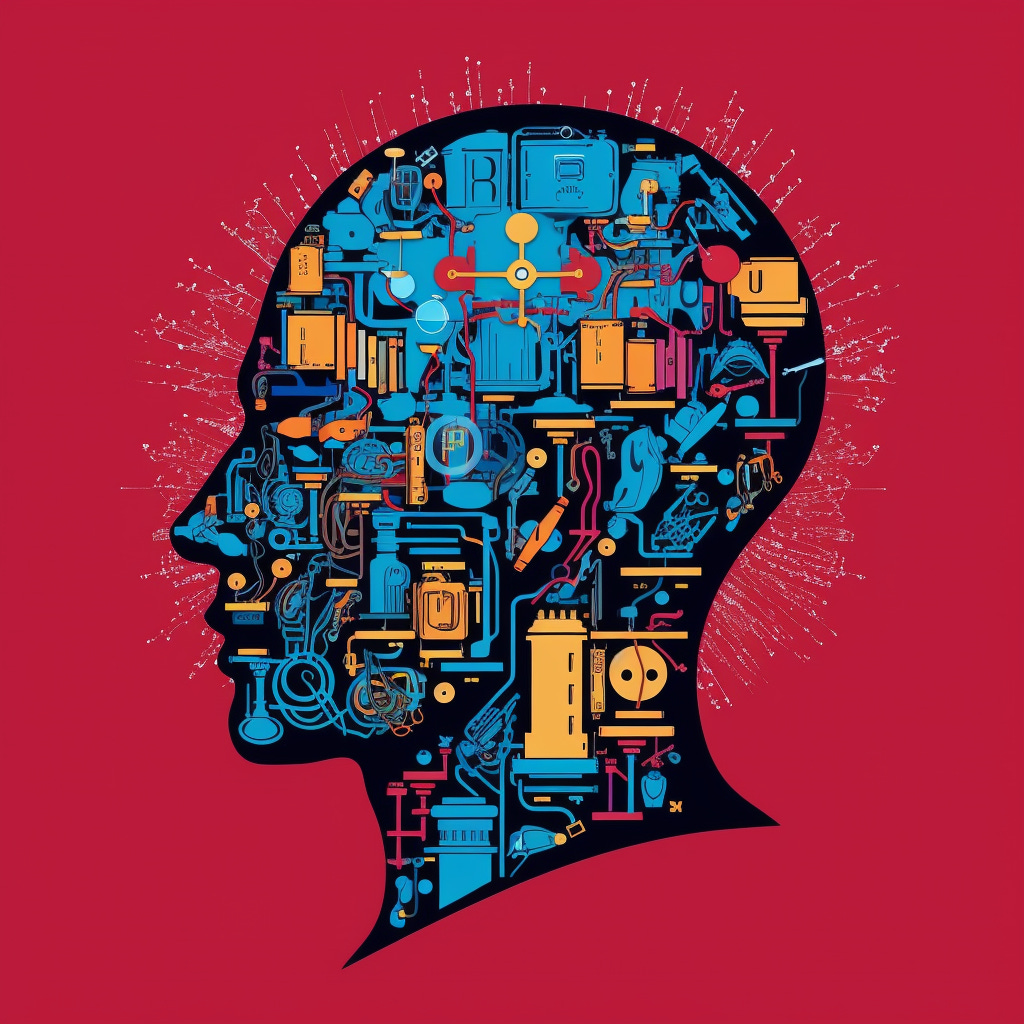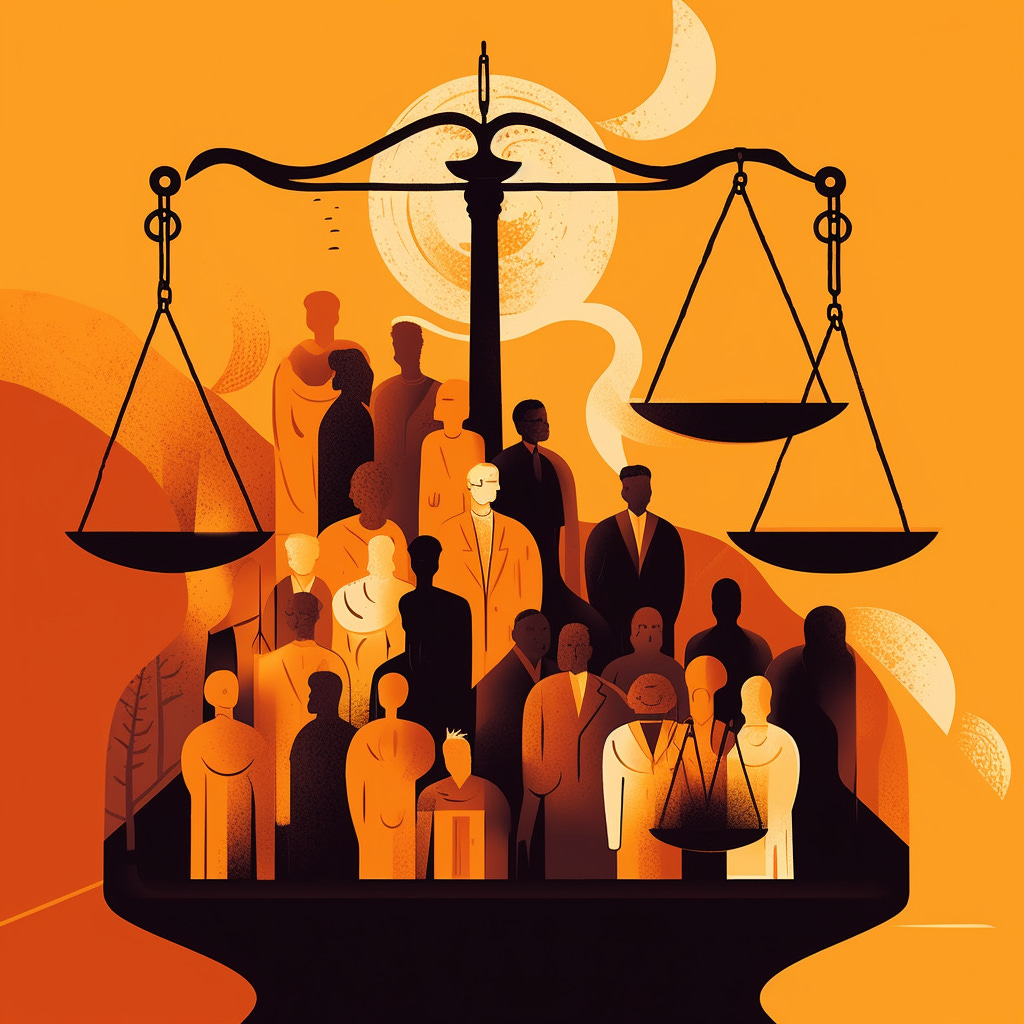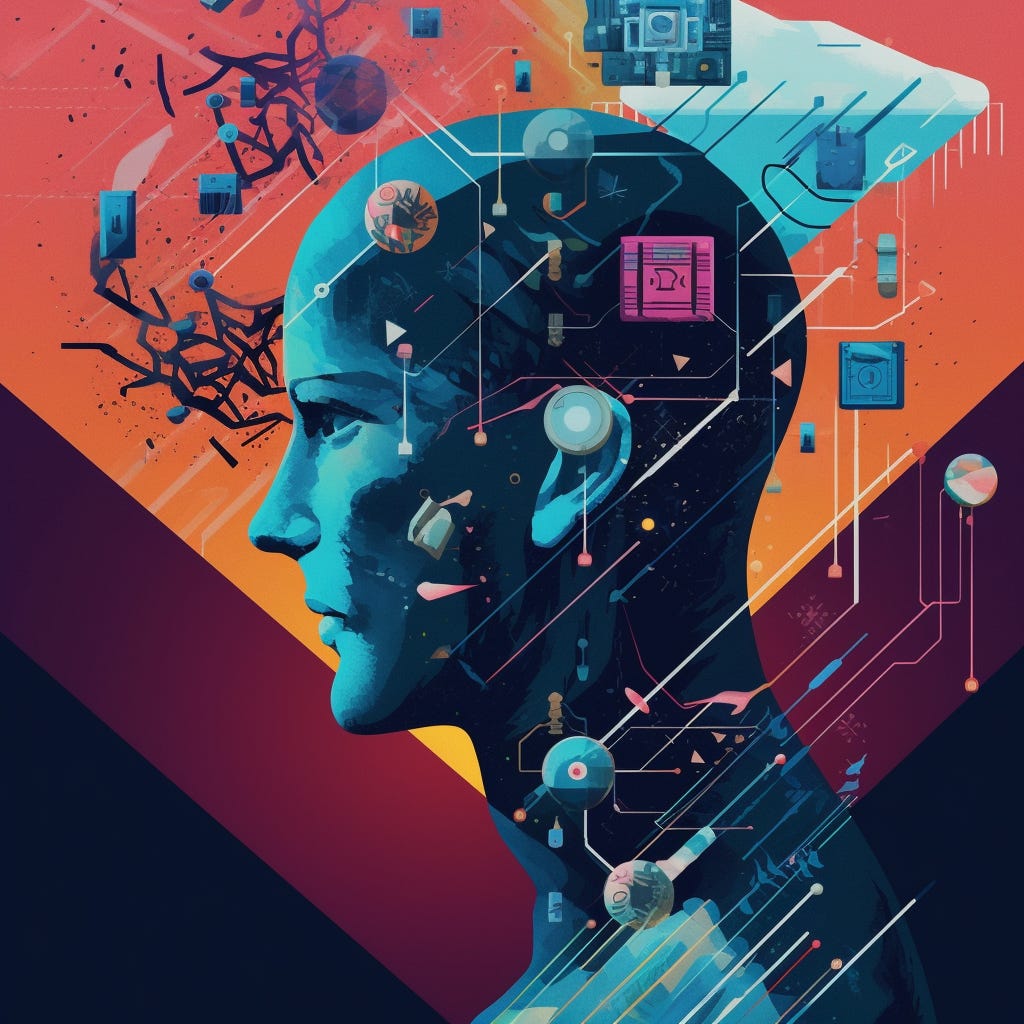AI for Justice: A Manifesto for Democratizing Access to Legal Services
Leveraging Artificial Intelligence to Empower the Underserved and Ignite a New Era of Legal Equality
In the United States alone, a staggering 80% of low-income individuals lack access to adequate legal representation (Legal Services Corporation, 2017)[1]. Globally, the situation is even more dire, with an estimated 5.1 billion people—two-thirds of the world's population—unable to access basic legal services (World Justice Project, 2019)[2]. The Legal AI Revolution offers us an unprecedented opportunity to dismantle the systemic barriers that have perpetuated this justice gap and create a more equitable legal landscape.
Despite the transformative power of AI in revolutionizing large law firms and corporations, the underserved majority remains largely ignored, resulting in a glaring disparity in access to justice. As a experienced legal professional who has spent a career in large law firms and corporate legal departments, I have witnessed this remarkable technology being wielded to serve the interests of the privileged few, leaving the marginalized and financially disadvantaged far behind. This status quo is unacceptable.
It is time for a paradigm shift. By harnessing the power of AI to empower individuals and urging governments, investors, and professional associations to facilitate its widespread adoption, we can ignite a new era of legal equality, where justice is not a privilege reserved for the wealthy few, but a fundamental right for all. It's time to embrace the Legal AI Revolution and create a world where access to justice is truly universal.
Section 1: AI-Powered Legal Support for Individuals
Let’s first explore the innovative ways AI technology can be harnessed to empower individuals in their pursuit of justice. In this section, we will discuss groundbreaking solutions that have the potential to reshape how people access and navigate the complex legal landscape.
AI-Driven Legal Information Platforms: Develop comprehensive, user-friendly AI-powered platforms that provide personalized, accurate, and easily understandable legal information. These platforms would offer tailored advice on various legal matters, from landlord-tenant disputes to employment law, ensuring that individuals can access the knowledge they need without drowning in legal jargon.
Virtual Legal Assistants: Create AI-powered virtual legal assistants that can help individuals draft, review, and modify legal documents. These digital assistants can provide guidance on everything from writing a will to negotiating a contract, ensuring that users have access to professional-quality legal support without the need for costly attorney consultations.
Legal Chatbots for Crisis Support: Implement AI chatbots that can provide immediate, real-time legal advice during critical situations, such as domestic violence, immigration issues, or bankruptcy proceedings. These chatbots would offer essential guidance and resources to those in need, empowering them to make informed decisions even in the midst of a crisis.
AI-Enabled Severance Agreement Review: Develop AI-driven solutions to review and analyze severance agreements, particularly for individuals affected by mass layoffs. By providing actionable insights and recommendations, these tools would empower workers to make informed decisions and secure fair terms during difficult times.
Automated Wills and Trusts: Leverage AI to simplify the process of creating wills and trusts, making estate planning more accessible and affordable for individuals from all walks of life. Through guided step-by-step assistance, users would be able to draft legally sound documents that protect their assets and loved ones.
AI Solutions for Domestic Violence Survivors: Develop AI-driven tools that help survivors of domestic violence understand their legal rights, access resources, and navigate the complex process of obtaining protective orders. By providing tailored guidance in a discreet and safe manner, these AI solutions can empower survivors to take the necessary steps towards safety and justice.
AI-Enabled Safe Communication Channels: Create AI-powered platforms that facilitate secure and confidential communication between domestic violence survivors and legal professionals. These platforms would use encryption and privacy technologies to ensure that sensitive information remains protected, allowing survivors to seek the help they need without fear of reprisal.
AI-Assisted Evidence Collection and Case Building: Leverage AI technology to help domestic violence survivors gather, organize, and analyze evidence for their case. From documenting incidents to identifying patterns of abuse, AI-driven tools can provide invaluable support for survivors seeking legal recourse.
Section 2: The Global Impact of AI-Driven Legal Support
The transformative power of AI-driven legal support extends far beyond the borders of a single nation. In this section, we will examine the global implications of embracing AI legal technology, focusing on how it can foster the rule of law, support developing countries, and strengthen legal systems around the world.
International Legal Aid: Extend AI-driven legal solutions to underserved populations across the globe, addressing legal disparities in countries with limited access to legal representation. By breaking down language and cultural barriers, AI technology can empower individuals to navigate complex legal systems, regardless of their location.
Building Capacity in Developing Countries: Utilize AI-driven tools to train and support legal professionals in developing countries, thereby enhancing the overall quality and accessibility of legal services in those regions. This initiative would ultimately foster a more equitable global legal landscape.
AI-Driven Legal Reform: Implement AI technology to analyze and evaluate existing legal frameworks in developing countries, identifying areas for improvement and reform. By utilizing data-driven insights, policymakers can address systemic issues, strengthen the rule of law, and promote more equitable and efficient legal systems.
AI-Powered Dispute Resolution Platforms: Develop AI-driven online dispute resolution (ODR) platforms that offer accessible and cost-effective alternatives to traditional legal proceedings in developing countries. By streamlining the resolution process and reducing the burden on overtaxed judicial systems, these platforms can foster greater access to justice and enhance the overall efficiency of the legal system.
Legal AI Education and Awareness Programs: Promote AI-driven education and awareness programs that empower individuals in developing countries with essential legal knowledge and skills. By leveraging AI technology to create engaging and culturally relevant content, these programs can foster a greater understanding of legal rights and responsibilities, helping to create a more informed and legally empowered citizenry.
Section 3: Addressing the Refugee Crisis through AI-Driven Immigration Support
The refugee crisis is a pressing global issue that requires innovative solutions. In this section, we will explore how AI-driven immigration support can play a crucial role in addressing the challenges faced by displaced populations, from streamlining asylum applications to facilitating successful integration into host societies.
AI-Assisted Asylum Applications: Develop AI-driven tools that streamline and simplify the asylum application process for refugees, ensuring that they can access the protection they need in a timely and efficient manner. By guiding users through the complex application procedures and providing tailored advice, these AI solutions can increase the chances of successful asylum claims.
AI-Powered Legal Aid for Refugees: Implement AI-powered platforms that offer refugees access to vital legal information and resources in multiple languages, helping them to better understand and navigate their host country's immigration system. By providing refugees with the knowledge they need to assert their rights, AI technology can play a pivotal role in mitigating the challenges faced by displaced populations.
AI-Enabled Immigration Case Management: Leverage AI technology to optimize the management and processing of immigration cases, helping authorities to allocate resources more effectively and reduce backlogs. By enhancing the efficiency of immigration systems, AI-driven solutions can ensure that refugees receive the support they need in a timely fashion.
AI for Refugee Integration: Utilize AI-driven tools to facilitate the successful integration of refugees into their host societies. From personalized language learning programs to tailored job-matching services, AI technology can help refugees overcome common barriers to integration and pave the way for a more inclusive society.
Section 4: The Role of Governments and Investors
The refugee crisis is a pressing global issue that requires innovative solutions. In this section, we will explore how AI-driven immigration support can play a crucial role in addressing the challenges faced by displaced populations, from streamlining asylum applications to facilitating successful integration into host societies.
Public-Private Partnerships: Encourage collaboration between governments, legal aid organizations, and AI technology companies to develop and implement AI-driven solutions specifically designed to cater to the needs of underserved populations. This partnership would ensure that legal AI initiatives are tailored to address the unique challenges faced by vulnerable communities.
Funding and Incentives: Establish grants, tax incentives, and other funding mechanisms to support the development and adoption of AI-powered legal solutions. By fostering a financial environment that encourages innovation, we can accelerate the development of AI tools that truly democratize access to legal help.
Regulatory Frameworks: Develop transparent and robust regulatory frameworks that address the ethical considerations and potential biases inherent in AI technology. These frameworks should ensure that AI-driven legal solutions are equitable, accountable, and transparent while safeguarding users' data privacy and security.
Section 5: A Call to Action for Attorneys, Law Firms, and Bar Associations
The power to bring about meaningful change lies not only in the hands of governments and investors but also within the legal profession itself. In this section, I call upon attorneys, law firms, and bar associations to embrace the Legal AI Revolution and play an active role in fostering its widespread adoption, paving the way for a more equitable and accessible legal landscape.
Champion AI Technology: Attorneys and law firms should stay informed about AI-driven legal solutions and integrate them into their practice, leveraging these tools to better serve clients, particularly those from underserved communities.
Pro Bono AI Initiatives: Attorneys and law firms can collaborate with AI technology companies to develop AI-powered pro bono programs aimed at increasing access to legal services for low-income individuals.
Encourage Bar Associations to Foster AI Adoption: Attorneys should advocate for state and local bar associations to actively support the adoption and integration of AI-driven legal solutions within the legal community, providing training, resources, and guidance to help legal professionals harness these tools for the greater good.
Public Awareness and Outreach: Attorneys, law firms, and bar associations can work together to launch public awareness and outreach campaigns that educate the public about the availability and benefits of AI-driven legal solutions, promoting understanding and acceptance of these technologies.
Advocate for Looser Restrictions on Legal Practice: Attorneys and bar associations should work together to urge state legislatures to reevaluate and loosen the restrictions on the practice of law. By revising regulations that impede innovation in the legal field, we can create an environment that fosters the development and implementation of AI-driven solutions that enhance access to justice for all.
Conclusion
We stand at the precipice of a new era in the legal landscape. The Legal AI Revolution has the potential to redefine the way we perceive and access justice, but only if we are bold enough to harness its full potential for the greater good. It is time to break free from the shackles of traditionalism and the status quo that has allowed the justice gap to widen, leaving countless individuals without recourse.
Let us seize this moment to champion the cause of the underserved, leveraging AI technology to create a world where access to justice is a right, not a privilege. Together, we can forge a future where legal equality is the norm and justice is truly universal, irrespective of one's financial standing or level of legal expertise. It is time to rise to the challenge and embrace the Legal AI Revolution, ensuring that the transformative power of AI is wielded for the benefit of all.
Cover art and images generated using Midjourney v. 5.
References
[1] Legal Services Corporation. (2017). The Justice Gap: Measuring the Unmet Civil Legal Needs of Low-income Americans. Retrieved from https://www.lsc.gov/sites/default/files/images/TheJusticeGap-FullReport.pdf
[2] World Justice Project. (2019). Global Insights on Access to Justice 2019. Retrieved from https://worldjusticeproject.org/sites/default/files/documents/Global_Insights_on_Access_to_Justice_2019_web.pdf










